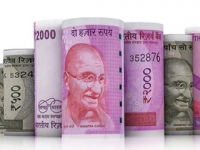Stress on emerging market currencies multiplied post Turkish currency crisis. Hitherto, robust growth data in USA, expectation of rate hike by US Fed had already fuelled greater demand for the green back (US dollar). Consequently, the dollar had been strengthening against all emerging market currencies. In addition, the recent rise in crude oil prices are adding to India’s currency woes. To elaborate India is a major importer of oil. Rising oil prices result into increased demand for US$ in India. This puts additional pressure on the currency.
Let us understand how equity and debt markets react to a weakening Rupee.
On a broad level, depreciating currency is not viewed kindly by both equity and debt markets. The primary reason for this being investment gains of foreign investors reduce as the currency depreciates. Consequently, we observe foreign institution investor (FII) outflows. Equity markets have seen FII outflows of Rs. 3,413 crore and debt markets recorded outflows of Rs. 42,606 crore till date in 2018.
Let us take a closer look to analyse the impact of currency on markets.
Equity markets
Different sectors and stocks react differently to falling rupee. Generally, export driven sectors tend to benefit from rupee depreciation. Typically, pharmaceuticals, IT, metals and export-oriented companies in chemicals, FMCG space see an improvement in their profitability as rupee falls. However, foreign loans or foreign labour costs offset gains.
Oil sector too is expected to see an improvement in profitability due to dual impact of increasing oil prices and depreciating currency. However, government policy (subsidy) is an important determinant of gains.
Import dependent sectors such as automobiles or foreign debt ridden sectors like power and telecom are likely to come under pressure as rupee depreciates.
In addition, falling rupee also affects India’s trade deficit, which is, likely to widen due to double whammy of rupee and oil. (Trade deficit occurs when the total value of a country’s imports is higher than the value of its exports.) Trade deficit is an important component of current account deficit (CAD). Generally, countries with higher CAD are considered less credit-worthy which increases foreign cost of borrowing for corporates.
Fixed income markets
Falling rupee tends to translate into higher yields, which is negative for the debt markets according to Lakshmi Iyer CIO (Debt) and Head Products at Kotak MF. “Rupee depreciation leads to higher outflows from FIIs which push the yields up. Moreover it increases the likelihood of rate hike by RBI which in turn increases bond yields,” she added.
Rupee depreciation coupled with rising crude oil prices have negative impact on inflation. While market participants believe that RBI’s inflation target for the year is feasible, any uptick in inflation increases the probability of rate hike by RBI.
However, at present RBI has substantial dollar reserves, which can help tide over any sharp correction in rupee vis-à-vis the dollar.






